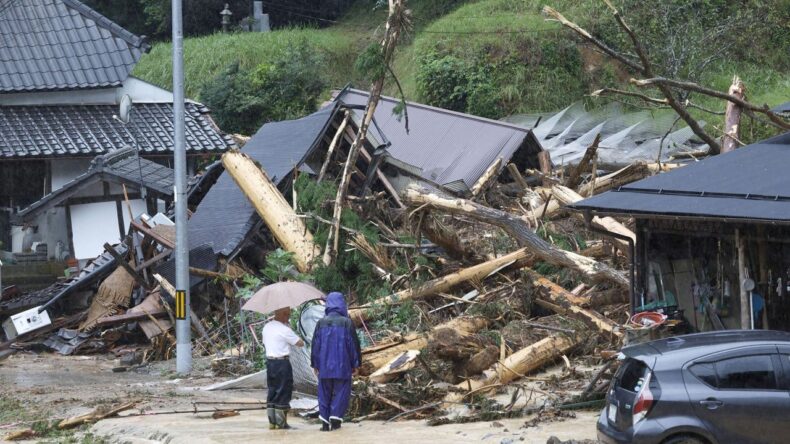As Typhoon Lan made its presence felt in the western parts of Japan, the nation braced for mass evacuations and widespread flight cancellations. The storm’s approach triggered evacuation warnings, affecting more than 237,000 individuals across 11 prefectures, as reported by the nation’s fire and disaster management agency. The imminent threat of the typhoon prompted authorities to take swift action to safeguard lives and property.

Widespread Disruption
The impact of Typhoon Lan was keenly felt in the aviation sector. Commercial flights from Chubu, Kansai, and Nagoya airports were suspended, resulting in a staggering total of over 950 cancellations across the country. This extensive disruption included halting operations for major airlines such as Japan Airlines and All Nippon Airways (ANA). The cancellations not only affected domestic travel but also had ripple effects on international flight schedules.
Typhoon’s Impact
Originating from the Pacific Ocean, Typhoon Lan made landfall near Shionomisaki in the Wakayama prefecture. With winds reaching approximately 160 kilometers per hour (100 miles per hour), the typhoon’s intensity reached the equivalent of a Category 2 hurricane. The forceful winds and torrential rains posed a significant risk to coastal areas and low-lying regions, prompting residents and officials to take precautionary measures.
Injuries Reported
In the wake of the typhoon’s onslaught, authorities reported injuries across five prefectures in western Japan. As of noon on Tuesday, the count stood at 26 injuries, distributed as follows: two in Shiga, three in Kyoto, three in Wakayama, seven in Hyogo, and 11 in Osaka. The toll on human lives underscored the potential dangers posed by the storm. Emergency response teams were mobilized to provide medical assistance and support to those affected.
Record Rainfall
Certain regions experienced record-breaking rainfall during Typhoon Lan’s passage. In the Tottori and Okayama prefectures, relentless rainfall exceeded the monthly average for August within hours. Kagamino town in Okayama received a staggering 461.5 millimeters (18 inches) of rainfall, while Tottori city recorded 483 millimeters (19 inches), according to data from the Japan Meteorological Agency. The deluge of rain led to flash floods, landslides, and waterlogged streets.
Warnings Issued
As the typhoon ravaged Japan, authorities issued flood and landslide warnings due to rising rivers and the destruction of bridges and buildings. While tornadoes formed in various areas, they thankfully caused minimal damage, adding to the overall challenges faced during the storm. The warnings highlighted the need for residents to stay vigilant and heed evacuation orders to ensure their safety.
Ongoing Threat
Despite weakening to tropical storm strength, Typhoon Lan continued to pose a threat as it neared the Sea of Japan by evening. Forecasters highlighted the risk of concentrated rains, emphasizing that the danger was not entirely diminished. As the typhoon’s path continued to unfold, monitoring its trajectory and intensity remained a top priority for meteorological agencies and disaster management teams.
Recurring Challenges
The arrival of Typhoon Lan was a reminder of the ongoing challenges Japan faces due to severe weather conditions. The nation had already encountered Typhoon Khanun earlier in August, which affected the southwestern region. In July, heavy rainfall resulted in fatalities, while a heatwave brought temperatures exceeding 102 degrees Fahrenheit, underscoring Japan’s vulnerability to a variety of extreme weather events. The consistent threats posed by natural disasters highlight the need for continued preparedness, rapid response, and effective coordination among authorities to protect lives and property.












